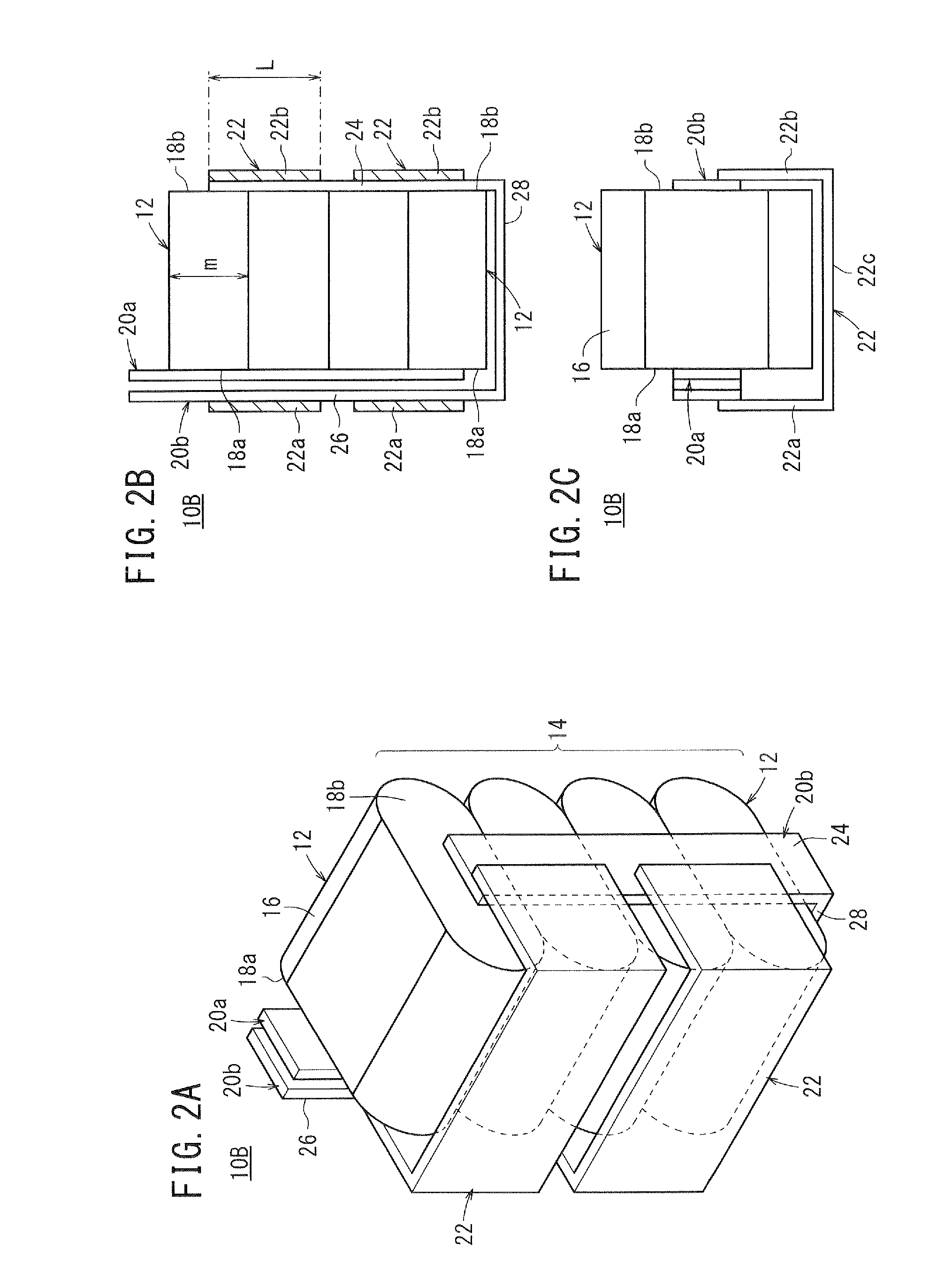Capacitor
a capacitor and self-inductance technology, applied in the field of capacitors, can solve the problems of difficulty in assembling the parts into capacitors, difficulty in holding parts, and insufficient self-inductance, and achieve the effect of reducing cost and lowering self-inductan
- Summary
- Abstract
- Description
- Claims
- Application Information
AI Technical Summary
Benefits of technology
Problems solved by technology
Method used
Image
Examples
##ventive examples 1 through 8
Inventive Examples 1 Through 8
[0078]The capacitor according to Inventive Example 1 is identical in structure to the first capacitor 10A shown in FIGS. 1A through 1C. The capacitor according to Inventive Example 2 is identical in structure to the second capacitor 10B shown in FIGS. 2A through 2C. The capacitor according to Inventive Example 3 is identical in structure to the third capacitor 10C shown in FIGS. 3A through 3C. The capacitor according to Inventive Example 4 is identical in structure to the fourth capacitor 10D shown in FIGS. 4A through 4C. The capacitor according to Inventive Example 5 is identical in structure to the fifth capacitor 10E shown in FIGS. 5A through 5C. The capacitor according to Inventive Example 6 is identical in structure to the sixth capacitor 10F shown in FIGS. 6A through 6C.
[0079]The capacitor according to Inventive Example 7 is identical in structure to the ninth capacitor 10I shown in FIG. 9. The capacitor according to Inventive Example 8 is identic...
PUM
 Login to View More
Login to View More Abstract
Description
Claims
Application Information
 Login to View More
Login to View More - R&D
- Intellectual Property
- Life Sciences
- Materials
- Tech Scout
- Unparalleled Data Quality
- Higher Quality Content
- 60% Fewer Hallucinations
Browse by: Latest US Patents, China's latest patents, Technical Efficacy Thesaurus, Application Domain, Technology Topic, Popular Technical Reports.
© 2025 PatSnap. All rights reserved.Legal|Privacy policy|Modern Slavery Act Transparency Statement|Sitemap|About US| Contact US: help@patsnap.com



